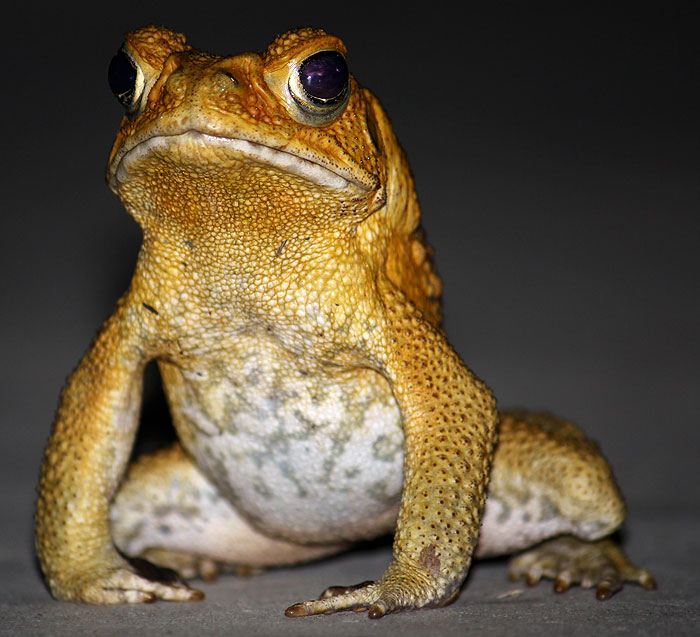Saltwater Crocodile (Crocodylus porosus)
While I like this blog to be about the creatures we find in our own yard, I thought that I would include some pics and info on some of our larger reptilian neighbours also - as they really deserve a mention.
The Saltwater Croc is a controversial subject in North Australia, due to the fact that they're one of those rare animals who see people as prey. Having been around for over 200,000,000 years - to a Croc, we're just another type of monkey - and monkeys are food.
By the late 1960s the Salty had been all but wiped out by hunters and farmers until legislation was passed (Western Australia in 1970, the Northern Territory in 1971 and Queensland in 1974s, making it illegal to kill them in the wild) Now, croc populations have rebounded resulting in the unfortunate but inevitable clash between Humans and Crocs.
I feel that Crocs are a valuable part of the ecosystem and if people choose to live in close proximity to them, common sense - and a healthy dose of respect, should be the order of the day. Of course, accidents will happen - but calling for the culling of animals out of fear or for political gain is both short-sighted and will not produce the desired result of making our waterways 'safe'.
Anyway, education is the key and if you're keen to see some Crocs up close and personal but don't want to be in the 'wild' with them, there are Crocodile parks and 'farms' that will give you the experience in complete comfort and safety.
For the slightly more adventurous there are a bunch of guided river cruises on the Daintree River. My favourite and one of the most established is Daintree River Tours | Crocodile Tours where you can see these animals along with snakes, birds etc in their own environment - which is always a thrill ...
Fortunately for me, I get to occasionally go out on a private boat and enjoy the sights on offer at my leisure - these are a few pics from our most recent trip. Personally I feel privileged to be able to see such animals in the wild. Long may it, and they - last.
The Saltwater Croc is a controversial subject in North Australia, due to the fact that they're one of those rare animals who see people as prey. Having been around for over 200,000,000 years - to a Croc, we're just another type of monkey - and monkeys are food.
By the late 1960s the Salty had been all but wiped out by hunters and farmers until legislation was passed (Western Australia in 1970, the Northern Territory in 1971 and Queensland in 1974s, making it illegal to kill them in the wild) Now, croc populations have rebounded resulting in the unfortunate but inevitable clash between Humans and Crocs.
 |
Crocodylus porosus |
I feel that Crocs are a valuable part of the ecosystem and if people choose to live in close proximity to them, common sense - and a healthy dose of respect, should be the order of the day. Of course, accidents will happen - but calling for the culling of animals out of fear or for political gain is both short-sighted and will not produce the desired result of making our waterways 'safe'.
 |
A pretty little female ... pretty from a distance that is |
 |
A large male salty - we took this pic around 50–60 meters from the boat ramp |
 |
He seemed completely relaxed, but was watching our every move - respect is the order of the day |
Anyway, education is the key and if you're keen to see some Crocs up close and personal but don't want to be in the 'wild' with them, there are Crocodile parks and 'farms' that will give you the experience in complete comfort and safety.
For the slightly more adventurous there are a bunch of guided river cruises on the Daintree River. My favourite and one of the most established is Daintree River Tours | Crocodile Tours where you can see these animals along with snakes, birds etc in their own environment - which is always a thrill ...
Fortunately for me, I get to occasionally go out on a private boat and enjoy the sights on offer at my leisure - these are a few pics from our most recent trip. Personally I feel privileged to be able to see such animals in the wild. Long may it, and they - last.
Pressure-sensitive ISO organs on the head and jaws of crocodiles are so good at detecting pressure changes, they are even more sensitive than human fingertips. That's pretty darn impressive. Earlier work suggested that ISOs served to detect pressure changes at the water's surface, but this latest study proves they're a lot more versatile than that. They can detect a wide variety of touch sensations, pressure changes, and vibrations.
Everything from delicately manipulating hatchlings to detecting minute pressure changes created by fish swimming past their jaws in the water. And more. We're working on one particular study at the moment that has just had a lot of light shed on it by this news. (source no longer available)
Everything from delicately manipulating hatchlings to detecting minute pressure changes created by fish swimming past their jaws in the water. And more. We're working on one particular study at the moment that has just had a lot of light shed on it by this news. (source no longer available)






Comments
Post a Comment